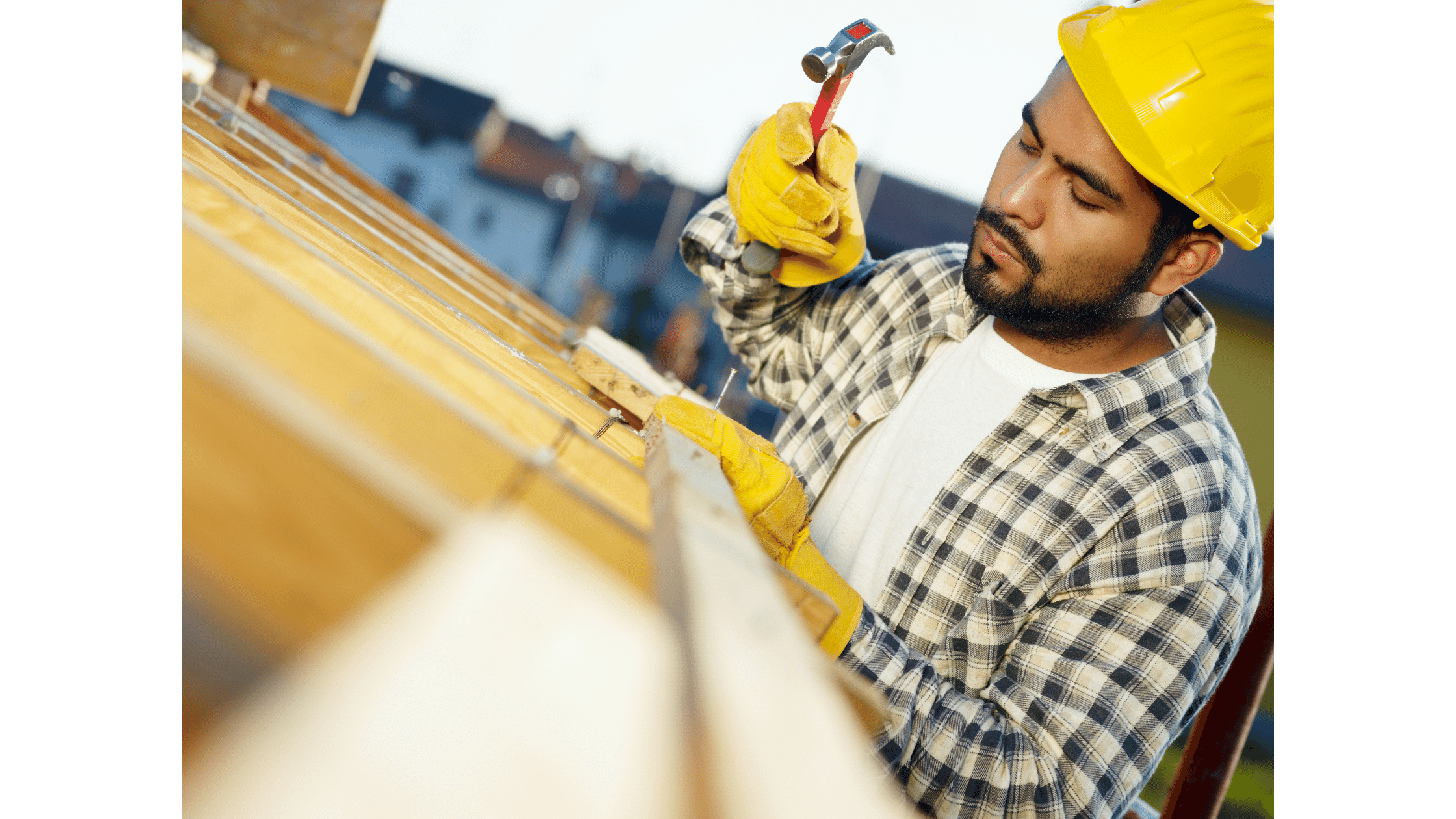What is Roofing?

Having a roof over your head has always been considered one of the basic human needs. Nowadays, our roofs and roofing are much more than that, they are real technological feats. Yet it all started as simply as possible 40,000 years ago with animal skins.
The roofing designates the part that covers the frame of a roof, it provides it with waterproofing and resistance properties, promotes the flow of rainwater and sometimes adds an aesthetic aspect.
There are mainly 3 types of roofing, the sloping roofing (the most common), the flat roofing, and the rounded roofing (rarer). Each form of roofing can have several types of coverings (slate, tile, metal, wood, concrete, etc.). Which implies very varied skills and costs for the installation. In any case, it is always advisable to use the services of an experienced craftsman, preferably certified for the installation of your roof.
The sloping roofing
There are several types of sloping roofing, among which:
Single-slope roofing with a single slope: Used in certain mountainous regions, it prevents snow from accumulating. It allows it to be evacuated more easily and prevents the weight from damaging the structure. This type of roofing, generally covered with slate, presents an original aesthetic. To guarantee the insulation and the good flow of rainwater on this unique slope, a precise calculation is essential.
The 2-sided roofing: This is the simplest and most common form. It offers a much larger area under the eaves. It can be delivered as a kit with consequently a lower cost. However, we can blame it for its lack of originality.
The 4-sided roofing: It has 4 equal slopes that meet at the level of the ridge of the frame.
The 2-sided hipped roofing: Widely used on bourgeois houses for its elegance, its original and modern appearance, this roofing protects the side façades well from rain runoff. The ridges (roofing overhangs with triangular cut sides) are placed on the two lengths of the roofing. This form of roofing however requires a complex frame and involves a high cost.
The core roofing: Also called the rolled-up roofing, the core roofing has a rustic aesthetic by softening the slope at the bottom of the slopes. The lower part is less inclined than the upper part. It facilitates the flow of rainwater and preserves the masonry.
The 2-sided roofing with break lines or attic at Mansart: Each slope of the roofing is formed by 2 sections with different inclinations. They stop where the two sides meet is called the break line. This roofing makes it possible to optimize the occupancy of the attic but has a higher cost.
The T or L roofing: This is double roofing for two adjoining frames. This structure requires that the junction between the two sides (valley) be perfectly made.
The flat roofing
As its name suggests, the flat roofing has no slope, which makes it possible to create a terrace or a green space. A single section composes it, it is not really a frame but rather a support.
The flat roofing is made up of:
- A waterproof coating;
- A screen protecting the insulation from humidity (vapor barrier);
- Thermal insulation;
- Possibly a membrane covering the insulation. When the latter is sandwiched between the vapor barrier below and the membrane above, it is called hot roofing;
- Openings to ventilate and bring in light.
Green roofing reinforces natural insulation. This roofing has a resolutely modern aesthetic but requires perfect management of the flow of rainwater to avoid the risk of infiltration.
The rounded roofing
Still uncommon but increasingly popular, this type of roofing with innovative design and soft shapes optimizes the attic and offers an original and aesthetic side. The insulation is also much better. The cover can be zinc, tiles, wood … and adapts to the rounded shape. The most used materials are especially zinc and sheet metal.
The rounded roofing allows a wide choice of shapes, the main ones being:
- The dome;
- The simple curvature;
- The double curvature;
- The turret.
The rounded roofing is ideal for people wishing to express their creativity. Very popular with environmentalists, this roofing makes it possible to collect rainwater very easily by installing gutters all around the roof and downspouts.
Materials used in roofing
Several types of roofing coverings are available in the market to meet all tastes, needs, and budgets.
Find out about the materials used for new construction or roofing repairs.
Thatch
With its rustic charm and natural, warm colors, the thatch has many advantages. It is a grouping of hollow stems of dried grasses tightly packed to form dense, tight layers. This type of material is an excellent thermal and acoustic insulator.
Tile
Tile is timeless, aesthetic, and traditional. Apart from its classic and elegant appearance, the tiled roofing is very resistant to winds and various shocks. It is robust, insulating, and waterproof.
Flat tiles are intended for houses with a steep slope of the roof slope while interlocking tiles are suitable for roofing with a slope between 25 ° and 60 °. There is a wide range of tiles in different shapes and colors.
Slate
Slate is a noble material that elegantly dresses the roofing. Slate also offers advantages in terms of performance and protection. Slate gives character to the home and guarantees the longevity of the roof.
- natural slate: this type of slate reacts poorly to chemicals, so care must be taken in the choice of treatment when maintaining wooden roofs.
- synthetic slate: just like natural slate, synthetic slate is strong and insulating. It is also more economical but has a shorter lifespan.
Conclusion
So, we presented to you in this article a general view of roofing, their types, and the materials used in their construction. This global idea can help you in the near or far future to decide which type of roofing to use and which material fits the best your need.

In Awe Roofing Limited is an Award-Winning, family owned and operated Vancouver Roofing Contractor with over 17 years of roofing experience. We serve the entire Lower Mainland area, from Whistler to Chilliwack, employing a team of professional staff members. Our team has won numerous awards including Best of Homestars for the last five years, and Three Best Rated six years in a row. Learn more






















